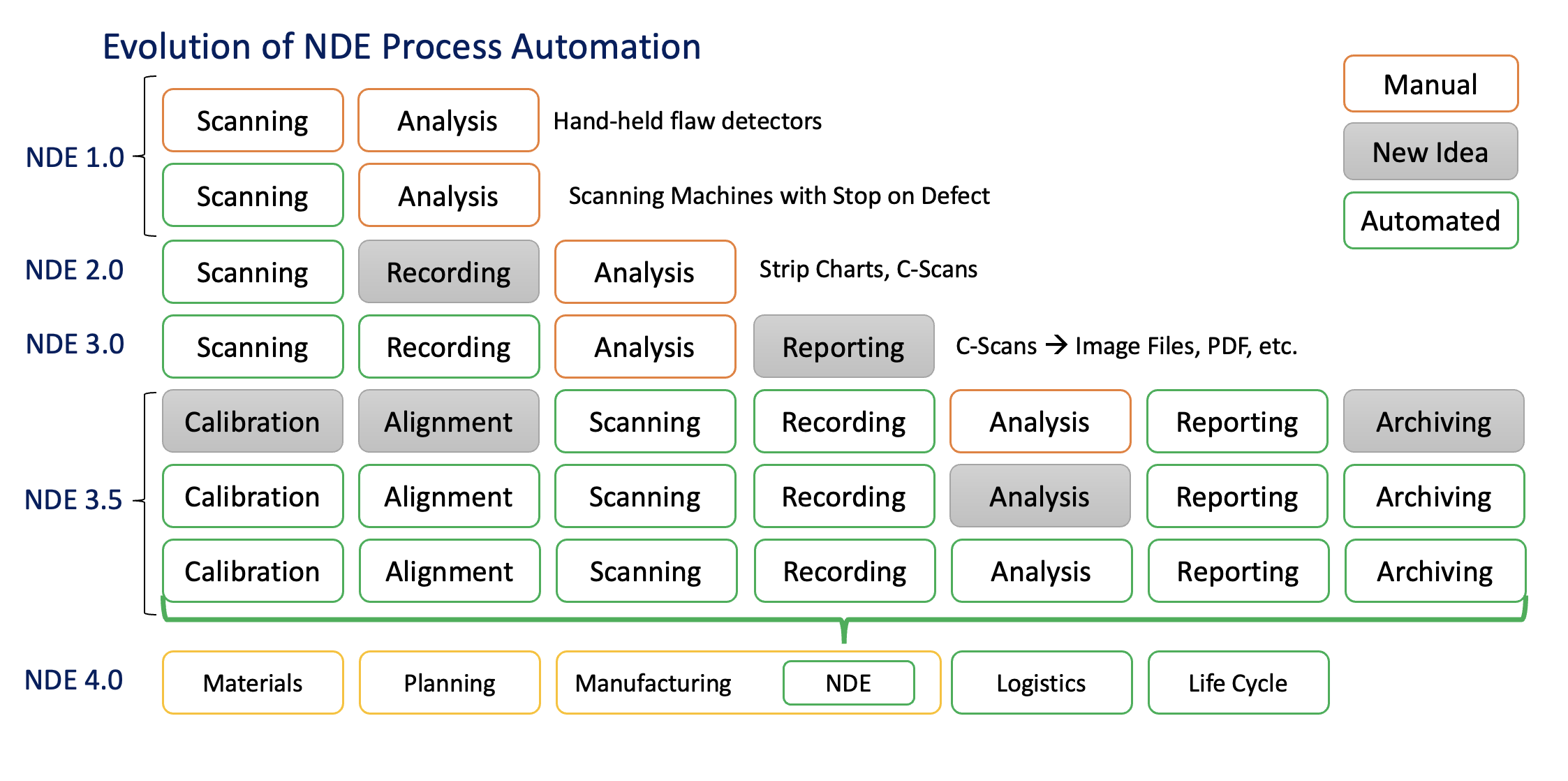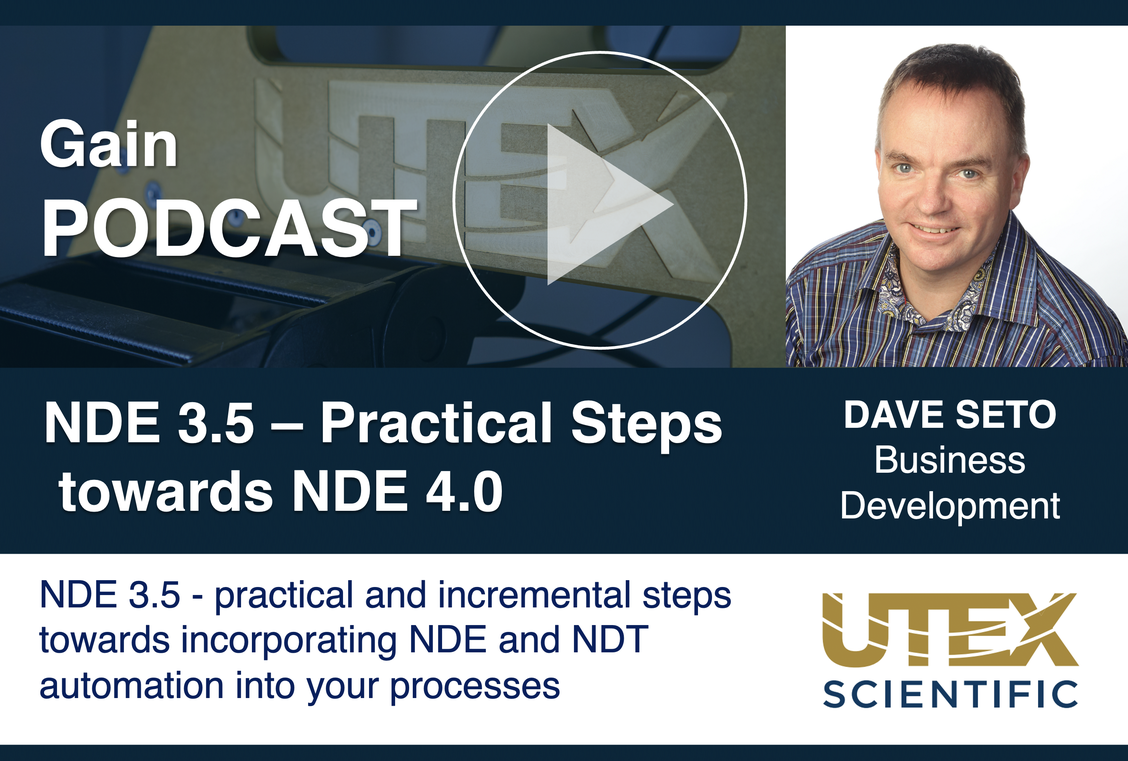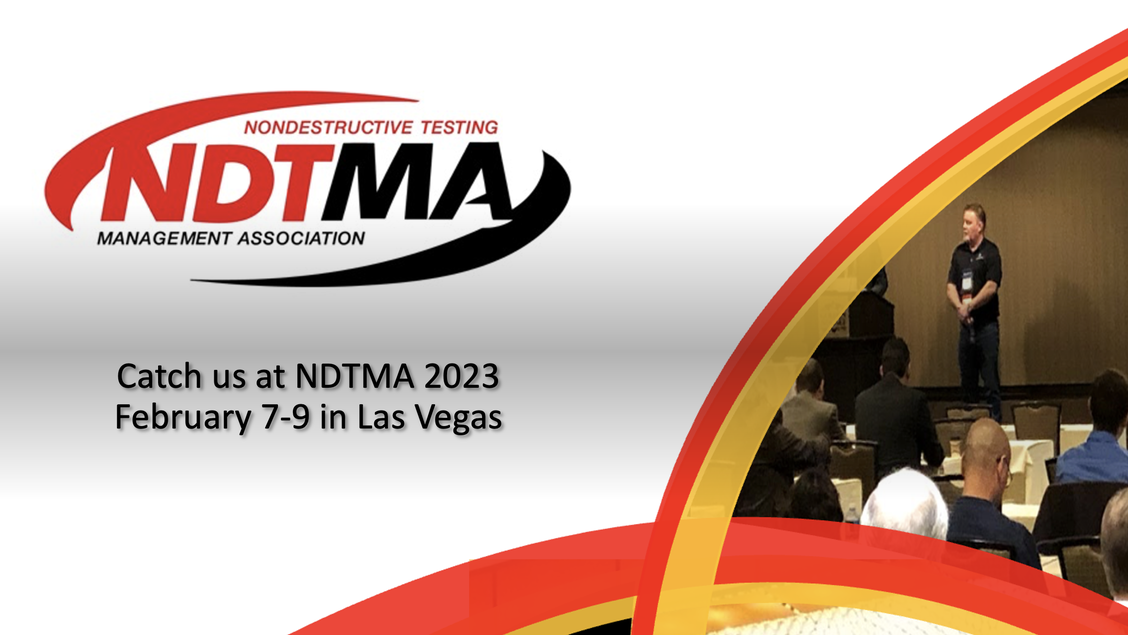Taking the First Step Towards NDE 4.0
Part 3: Metadata increases the value of your NDE Data

In this third post on the topic of NDE Automation, we examine opportunities to make the most of your NDE data. This includes a topic that may be new to some; metadata, or data about your data. Metadata is an inherent part of all modern NDE and NDT data files, and it is needed for automation of tasks related to those files. Understanding and using your data and its metadata can unlock a number of benefits beyond a simple go / no-go decision about the inspected item.
What is metadata?
Modern NDE with imaging is all about the data file. Ultrasonic C-Scans, eddy current scans, radiographic images, and more, are all collected, stored and shared as data files. All of these image files have metadata, whether or not you deliberately create it.
NDE data is similar to the photos you capture with your mobile phone. The image is the thing you care about, stored as digital data in some recognized format, such as a JPEG for the photo example. However, these image files all have information embedded within them, including: the time, date, and location of creation, the size and resolution of the image, and the phone type and settings.
In the case of an NDE image, the metadata would be similar to these photo files with some additional information such as the instrument serial number, its last calibration date, the probe type and serial number, and the instrument configuration (gain settings, gate thresholds, location, etc.)
Automated NDE systems can collate even more contextual information such as the location for the inspection, the inspected item type and serial number, the NDE process specifications, work instruction numbers, and so on. The list can be quite long, and the kinds of metadata can vary widely. The extent and types of metadata stored with an NDE image might be different depending upon the NDE techniques used, and whether the inspection is made in the context of an in-service inspection, a repair, or during the original manufacture of the item.
Why care about metadata?
An immediate benefit of embedding metadata within the inspection file, is the audit trail that it provides. The NDE data file provides the inspection results, while its metadata provides the contextual information about the inspection process. A reviewer who has access to the record of the configuration of the inspection process can easily verify that the inspection was configured correctly, and that it was performed according to the relevant specifications.
In the previous article we discussed automating the calibration and alignment tasks before setting up to inspect products or assets. When stored with their metadata, those files provide more than a calibration record, they provide a record of the calibration process. This adds an extra layer of assurance for any audit or review.
When the metadata is embedded within the actual data file, it is easily accessed and cannot get lost or separated from the inspection data that it describes.
“Data is the new oil” said mathematician Clive Humby in 2006. He has since been proven correct, based upon the largest companies on the planet in 2023. Google, Meta (Facebook), Amazon, and many other huge firms are all trading in data, for hundreds of billions of dollars. Like oil data must be refined and processed to achieve its maximum potential. Unlike oil however, data is infinitely reusable, and we keep making more of it every day. An ever-expanding library of NDE data is a bottomless well of usable information about the products and processes - not just about the inspection process, but about the manufacturing, operation, and maintenance processes as well.
Metadata provides many possibilities for making better use of our NDE data library. For example, a statistical survey of inspection results only becomes possible when the data files have identifying information and when their contents have context. Metadata enables the organization of a large set of inspection files and facilitates analysis of the data from all of the files, not just one at a time as individual files. The simplest example might be detection of patterns or trends within those NDE results. Understanding those statistics can lead to process improvements, in the case of manufacturing NDE, or they can lead to predictive lifespan estimates, in the case of fixed assets like power generation equipment or civil transportation infrastructure.
NDE Automation Creates and Uses Metadata
The deliberate use of metadata is a significant element of the Manufacturing 4.0 and the NDE 4.0 movements that are taking place right now.[2] The integration of individually automated subsystems, into a coherent ecosystem is possible only by using metadata. For example: in a manufacturing context, the status of the integrated NDE system (Active / Inactive / Calibrating) has an effect upon both the upstream and downstream operations for the manufacture of a product. In a field service context, the real-time status of an asset’s inspection affects the overall schedule for the inspection project, as well as the planning for the potential of an extended shut-down and launching a repair ticket.
Automation of the inspection with modern NDE software and instruments enables contextual information to be embedded into the data file for free. It is one of the ways that automating the process creates value, because the human operator is no longer required to spend any time or effort to manually input this information. All of the contextual information about the inspection can – and should be coming from a database, from the instrument, or from another computer. In an ideal setup, the most any NDE inspector should have to do is scan a barcode to positively identify what item or fixed asset is being inspected, with what equipment, and to what spec.

Image adapted from: W. Weber, D. Mair, D. Jansen, L. Lombardi , ’Advances in Inspection Automation’
QNDE Proceedings, 2009
Our next post will explore how you can increase your system automation through retrofitting your system with new motion control software and components and while minimizing impact to the approved processes already in place.
Interested in learning more about NDE 3.5? Listen to NDTnow.com’s podcast GAIN, featuring UTEX’s Dave Seto.


More in "Taking the First Step Towards NDE 4.0" series
|